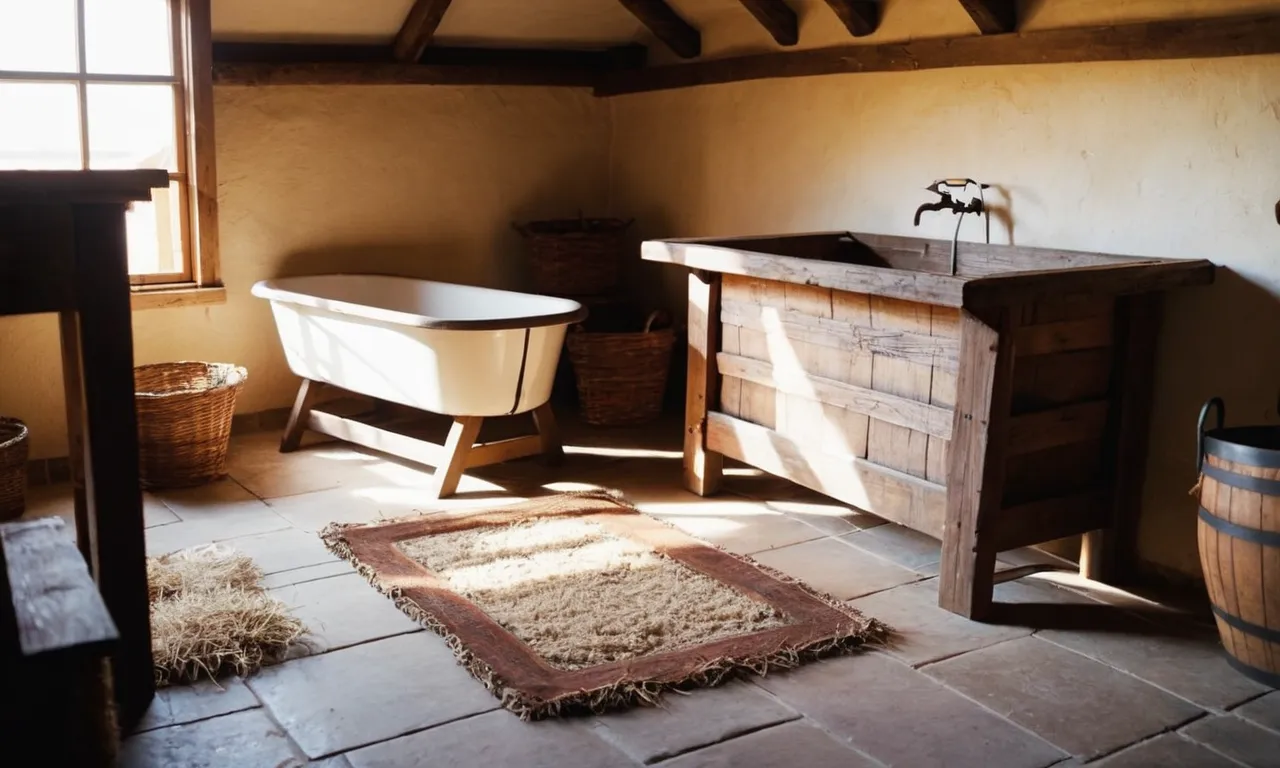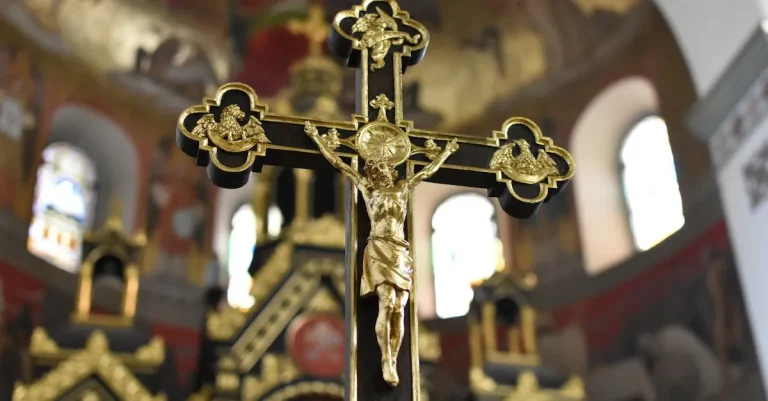Where Was Baby Jesus Born? The Full Story Of Jesus’ Birthplace
The story of Jesus’ birth is one of the most famous tales in human history. For over 2000 years, people have wondered: where exactly was baby Jesus born? If you’re looking for a quick answer, tradition holds that Jesus was born in Bethlehem.
But the full story behind Jesus’ birthplace is richer and more complex.
In this approximately 3000 word article, we’ll explore the evidence behind Jesus’ birthplace in depth. We’ll look at biblical accounts, archaeological finds, and historical context to reconstruct the events surrounding the nativity.
By the end, you’ll understand the scholarly consensus on where Jesus was born and why this location holds such significance.
The Biblical Account Points to Bethlehem
The Gospels of Matthew and Luke Both Place Jesus’ Birth in Bethlehem
The New Testament gospels of Matthew and Luke provide the most detail about Jesus’ birth and both specify that Jesus was born in Bethlehem. Matthew 2:1 states that “Jesus was born in Bethlehem of Judea.”
Similarly, Luke 2:4-7 indicates that Joseph and Mary traveled from Nazareth to Bethlehem, where she gave birth to Jesus. The gospel writers go to great lengths to demonstrate how Jesus’ birth in Bethlehem fulfilled Old Testament prophecy.
Prophecies in the Old Testament Also Predict a Bethlehem Birth
Several Old Testament prophecies pointed to Bethlehem as the birthplace of the Messiah. Micah 5:2 is most explicit: “But you, Bethlehem Ephrathah, though you are small among the clans of Judah, out of you will come for me one who will be ruler over Israel.”
This explains why King Herod consulted chief priests and teachers of the law about where the Messiah was to be born (Matthew 2:4-6). They informed him it was to be Bethlehem, based on Micah’s prophecy.
Other prophecies implied a Bethlehem birthplace without mentioning it directly. God promised King David that his throne would be established forever through the Messiah (2 Samuel 7:12-13). Since David was from Bethlehem, it was assumed the Messiah would be born there as well.
The Census Under Quirinius May Have Brought Jesus’ Parents to Bethlehem
Both Matthew and Luke mention a Roman census that may have been the reason Joseph and Mary traveled from Nazareth to Bethlehem just prior to Jesus’ birth. Luke 2:1 states Caesar Augustus decreed that “all the world should be registered” and that Joseph went to register in his ancestral home of Bethlehem.
However, historical records show Quirinius was not governor of Syria until AD 6, after Herod’s death. This has led to debate over the historicity of Luke’s account.
Some scholars believe Luke was referring to an earlier, local census under Herod. Others argue the registration was for taxation purposes under Quirinius before he became governor. While the exact circumstances are unclear, the biblical emphasis is that God providentially arranged the timing of Jesus’ birth to fulfill prophecy.
Archaeological Evidence Bolsters the Bethlehem Tradition
Excavations Have Uncovered a 1st Century Village Under Modern Bethlehem
Archaeological excavations in Bethlehem have uncovered the remains of a small village dating back to the 1st century AD, providing evidence that Bethlehem was indeed inhabited at the time of Jesus’ birth.
In 2012, archaeologists excavating near the Church of the Nativity found pottery shards, stone vessels, and a 1st century BC coin, indicating a modest village existed on the site centuries before the church was built.
Further excavations under Manger Square near the church have revealed well-preserved 1st century living surfaces, including rooms, courtyards, and access points. Israel Antiquities Authority archaeologist Amit Re’em says these discoveries offer “a true connection” to early Christians who identified this area as Jesus’ birthplace.
While the excavations don’t provide definitive proof of the nativity events, they do bolster the historical accuracy of Bethlehem as the location described in the Gospels.
Several Sites Are Possible Locations for the Nativity Scene
Within ancient Bethlehem, there are at least two possible specific sites for the setting of the nativity story. One is a cave located beneath the main altar in the Church of the Nativity, which has been venerated as Jesus’ birthplace since the 2nd century AD.
The other is St. Jerome’s Cave, also known as the Chapel of the Nativity of Jesus, located near the church.
St. Jerome, who translated the Bible into Latin in the 4th century AD, claimed Jesus was born in a cave used to shelter animals. This would align with the biblical account of the manger bed. While the cave’s use in the 4th century is established, its existence in the 1st century is harder to confirm.
Nonetheless, archeologist Re’em says caves were common around early Bethlehem and used as stables.
But Skeptics Note a Lack of Direct Archaeological Proof
Despite the compelling evidence from digs in Bethlehem, some skeptics argue there is still no definitive archaeological proof pinpointing the exact birthplace of Jesus. Excavations have not uncovered specific artifacts from the exact time of Jesus’ birth that explicitly point to a nativity site.
There are also no 1st century texts outside the Gospels that describe the location.
However, the absence of direct archaeological evidence doesn’t disprove the nativity events taking place in Bethlehem. Given the modest nature of the town, it’s unsurprising that no grand structure was erected at Jesus’ birthplace in the 1st century.
The accounts of Bethlehem as Jesus’ birthplace could reflect historical memories in the early Christian community rather than an attempt to make Scripture align with archaeology.
Alternative Theories Question the Bethlehem Tradition
Some Scholars Suggest Nazareth as Jesus’ Birthplace
While the gospels of Matthew and Luke state that Jesus was born in Bethlehem, some modern scholars have questioned this traditional account. A minority of scholars, such as archaeologist Aviram Oshri, have suggested that Jesus was actually born in Nazareth, the hometown of his parents Mary and Joseph.
Proponents of a Nazareth birth point to the lack of first century evidence for Jesus being born in Bethlehem. The earliest gospel, Mark, makes no mention of a Bethlehem birth and later gospels give inconsistent details.
There is also no record of a Roman census requiring families to travel for registration, as described in Luke.
According to this theory, the Bethlehem origin was invented by the later gospel writers to portray Jesus as the Messiah by fulfilling the prophecy that the Messiah would descend from David’s lineage and be born in David’s city, Bethlehem.
Having Jesus hail from the insignificant town of Nazareth was seen as unlikely for the Messiah.
While inventive, this stance remains conjectural. The Nazareth theory relies on arguing from silence and dismissing gospel accounts as fabricated. Most scholars maintain Bethlehem as the more likely birthplace, though some allow that its historicity is uncertain.
Mythicist Theories Dispute a Historical Jesus Altogether
A more radical stance completely denies that Jesus was a historical figure. This position, known as mythicism, claims the Jesus story originated as a Jewish myth that later came to be interpreted as history.
Lack of first century secular references to Jesus is cited as evidence for his fictional nature.
According to mythicists like professor Robert M. Price, the Jesus narrative was patterned after savior figures in other Near Eastern religions. Stories of a dying and rising god, miraculous birth, royal ancestry, and performance of miracles were borrowed and assigned to the fictional character Jesus.
Most scholars dismiss mythicist theories given the abundant references to Jesus in first century Christian and non-Christian sources. They view his existence as well attested as other figures of antiquity. However, mythicists counter that independent confirmation is still lacking.
While creative, the mythicist stance remains highly speculative. It requires belief in a vast scholarly conspiracy to supplant myth with history. Most scholars acknowledge a historical Jesus while accepting that myths accrued to his biography over time.
Why Bethlehem’s Symbolic Importance Strengthened this Tradition
Bethlehem Had Davidic and Messianic Significance
Bethlehem was the birthplace of King David, and thus carried great significance for ancient Jews. As the hometown of Israel’s greatest king, Bethlehem was seen as the city of David and had strong messianic connotations.
Biblical prophecies foretold that the Messiah would be a descendant of David, so it made sense for the gospel writers to associate Jesus’ birth with David’s city.
The book of Micah, written around 700 BC, contains a well-known messianic prophecy: “But you, O Bethlehem Ephrathah, who are too little to be among the clans of Judah, from you shall come forth for me one who is to be ruler in Israel, whose coming forth is from of old, from ancient days” (Micah 5:2).
This passage depicts the Messiah as arising from small, humble Bethlehem. Situating Jesus’ birth in Bethlehem bolstered his claim as the long-awaited Davidic ruler.
In the gospel narratives, Joseph travels from Nazareth to Bethlehem to register in a Roman census because he is of the “house and lineage of David” (Luke 2:4). Jesus, as Joseph’s son, is thus born in King David’s city, emphasizing his role as the rightful and prophesied heir to David’s throne.
Bethlehem’s Davidic heritage lent historical credibility and theological meaning to the gospel accounts of Christ’s birth.
Its Proximity to Jerusalem Was Politically Useful
In addition to its Davidic connections, Bethlehem’s close proximity to Jerusalem, the holy city, strengthened its appeal as Jesus’ birthplace. Located only 5 miles south of Jerusalem, Bethlehem provided a nearby birth site that allowed Jesus to be presented more easily as the Messiah of Jewish hopes and prophecies.
If Jesus had been born in Nazareth, 80 miles north of Jerusalem, it may have seemed strange for the prophesied king of the Jews to hail from such a distant, rural place. But Bethlehem was practically a Jerusalem suburb, only a short distance from the Temple and the religious elite.
This physical closeness to the holy city helped present Jesus as the fulfillment of Jewish messianic expectations centered in Jerusalem.
Early Jewish followers of Jesus, and later the gospel writers, had political motivations as well. Situating Jesus’ birth near Jerusalem helped make his messianic claims more convincing to Jews and less threatening to Romans.
A Bethlehem birthplace presented Christ as a “spiritual” king rather than a political rebel against Roman authority. The gospel birth narratives connect Jesus to Jewish heritage through his Davidic lineage and birthplace, while also avoiding overt clashes with Rome that could endanger the fledgling Christian movement.
The Debate Continues, But the Consensus Still Favors Bethlehem
The birthplace of Jesus has been debated by scholars for centuries. The two main contenders are Bethlehem and Nazareth. While a definitive answer may never be known, most scholars and theologians believe the evidence points to Bethlehem as the more likely site of Jesus’ birth.
The Gospel accounts in Matthew and Luke both state that Jesus was born in Bethlehem. Matthew 2:1 says “Jesus was born in Bethlehem of Judea.” Luke 2:4-6 also specifies that Joseph and Mary traveled from Nazareth to Bethlehem, where she gave birth to Jesus.
This is the strongest evidence for Bethlehem being the birthplace.
In addition, the prophecy of Micah 5:2 predicted the Messiah would come from Bethlehem: “But you, Bethlehem Ephrathah, though you are small among the clans of Judah, out of you will come for me one who will be ruler over Israel.”
This prophecy is cited in Matthew 2:5-6 as being fulfilled by Jesus’ birth in Bethlehem.
Archaeological discoveries have uncovered evidence of a village existing in Bethlehem dating back to at least the 1st century BCE. Several sites specifically related to the nativity story have also been unearthed, providing tangible connections.
These include the Grotto of the Nativity, believed to be the site of Jesus’ birth, and remnants of the Church of the Nativity constructed in the 4th century CE.
Despite this evidence, some challenges have been raised against Bethlehem as the birthplace:
- Jesus is frequently referred to as “Jesus of Nazareth” in the Gospels, implying a connection to that city.
- No non-biblical sources definitively mention Bethlehem as Jesus’ birthplace in the 1st century.
- Archeological excavations indicate Bethlehem may have been uninhabited during the 1st century BCE/CE.
In light of these questions, some scholars propose Nazareth or another unknown village as a potential site of Jesus’ birth. But the majority still believe Bethlehem has the strongest case based on the Gospel accounts and Old Testament prophecy.
While we may never have absolute certainty, the weight of evidence continues to favor Bethlehem as the birthplace of Jesus. The traditional site in Bethlehem remains a destination for millions of pilgrims each year who desire to walk in the footsteps of Mary and Joseph and visit the humble place where the Savior of the world entered human history.
Conclusion
In the quest to uncover Jesus’ birthplace, the traditional site of Bethlehem still reigns supreme for most scholars. The biblical accounts and prophecies pointing to Bethlehem, along with archaeological evidence of a first-century village under modern Bethlehem, make it the most likely candidate.
Alternative theories questioning Bethlehem face a lack of positive evidence for other sites like Nazareth. In the end, Bethlehem’s symbolic Davidic and messianic connections probably helped cement its role in the nativity tradition.
While historical details remain hazy, the weight of evidence suggests this humble village was the birthplace of Christianity’s most influential figure.








